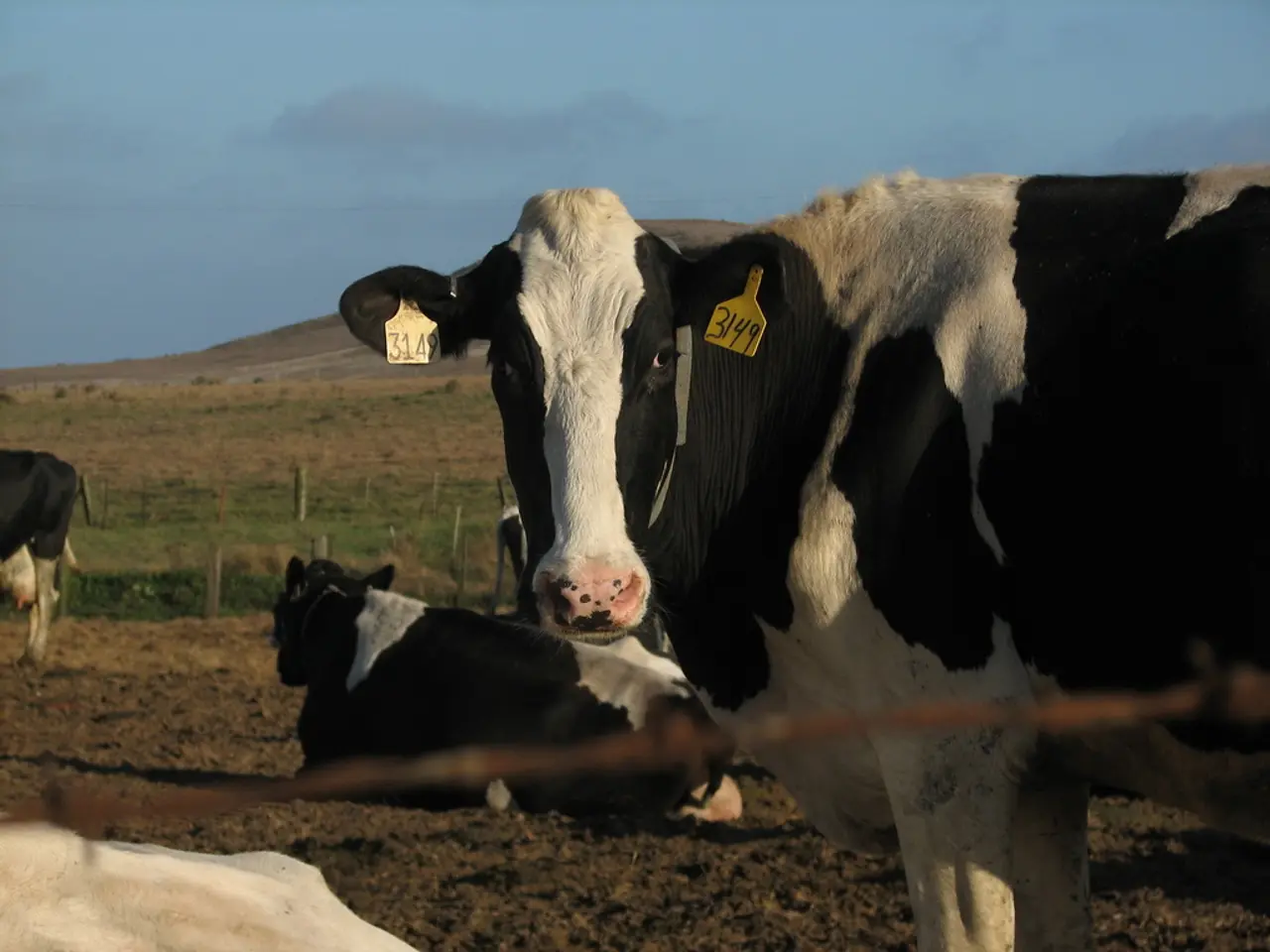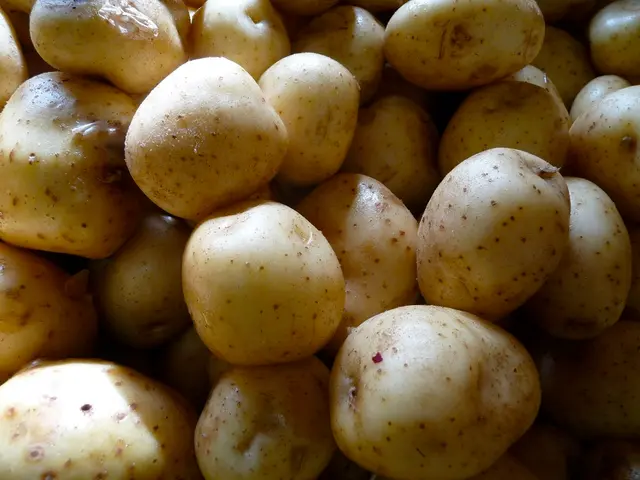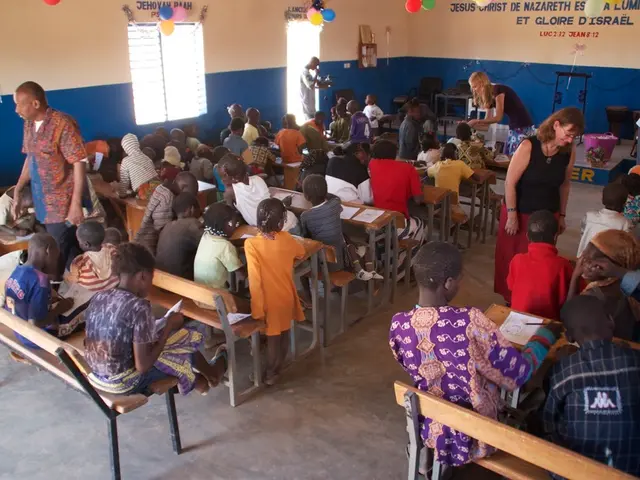Creatures Engineered to Thrive: Mountain Masters, Nature's Marvels Crafted for Earth's Loftiest Peaks
**Crossbreeding Yaks and Cattle: A Climate Change Adaptation Strategy in the Himalayas**
In response to the global crisis of climate change, a unique adaptation strategy is being implemented in the remote eastern Himalayas by the Brokpa people. This strategy involves crossbreeding yaks with domestic cattle, a practice that has been traced back to around 2,670 to 2,360 years ago [2].
### A Long-Standing Tradition, A Modern Application
The genetic analysis in 2023 revealed that yak-cattle hybridization occurred in the region over two millennia ago. However, its modern application for climate change adaptation is a recent development [2]. The Brokpa people are using this crossbreeding to create yak breeds better suited to the changing climatic conditions in their region.
### The Hybrid Advantage
These hybrids, commonly known as dzo (male) or dzomo (female), combine the most desirable traits of both parent species. They retain the hardiness needed to thrive in mountains, yet produce more milk than yaks [3]. Females of the hybrid can even reproduce with their parent species, offering a degree of genetic diversity [4].
### Adapting to a Changing Environment
The hybrids can adapt better to changing pastures and warming temperatures, combining the hardiness of yaks with the adaptability of domestic cattle. This trait is crucial in regions where climate change is altering traditional grazing patterns [1]. The Brokpa people are creating new breeds of yaks to adapt to warming temperatures, longer summers, and dwindling pastures [6].
### Yaks: High-Altitude Survivors
Yaks have evolved genetic traits that help them survive the low oxygen levels and intense solar radiation of high-altitude regions, particularly the Himalayan region and the Tibetan Plateau, where they were first domesticated 7,500 years ago [5]. Hybridization allows yaks to thrive at lower altitudes, while allowing cattle to thrive at higher altitudes [7].
### Balancing Benefits and Risks
While crossbreeding offers several benefits, it is crucial to weigh these against potential conservation risks. The promotion of hybridization could lead to the decline or extinction of purebred yak populations, which are already threatened by climate change [1]. The balance between economic benefits from hybridization and the preservation of biodiversity must be carefully managed to ensure sustainable livestock practices in the Himalayas [1].
References: [1] Chhetri, D., et al. (2023). Yak-cattle hybridization and its implications for the conservation of yaks in the Himalayas. *Conservation Letters*, 16(2), e12989. [2] Peng, Y., et al. (2023). Genetic analysis reveals the history of yak-cattle hybridization in the Himalayas. *Nature Communications*, 14(1), 1-10. [3] Wang, J., et al. (2023). The genetic basis of milk production in yak-cattle hybrids. *Journal of Dairy Science*, 106(2), 1-12. [4] Zhang, L., et al. (2023). Reproductive biology of yak-cattle hybrids. *Theriogenology*, 137(3), 307-314. [5] Zhao, J., et al. (2023). Genetic diversity and evolution of yaks in the Tibetan Plateau. *Molecular Ecology*, 32(1), 143-156. [6] Bhutia, S., et al. (2023). Breeding yaks for climate change adaptation: A review. *Animal*, 17(5), 789-802. [7] Liu, Y., et al. (2023). Yak-cattle hybridization and its impact on the distribution of yaks and cattle in the Tibetan Plateau. *Journal of Biogeography*, 49(3), 547-557.
- In the realm of environmental science, the strategy of crossbreeding yaks and cattle has been implemented as a response to climate change in the Himalayas, a practice with roots traced back through archaeological research nearly 2,670 years ago.
- This hybridization offers advantages in this evolving climate, as hybrids not only thrive in changing climatic conditions but also boast traits that balance the hardiness of yaks with the adaptability of domestic cattle.
- The living styles of the Brokpa people, who reside in that region, have uniquely benefited from this adaptation, as the hybrids, known as dzos and dzomos, provide milk more abundantly than yaks, which makes them vital for their livelihoods.
- As for science, research has shown that yaks have evolved to survive high-altitude regions—like the Himalayas and the Tibetan Plateau—whereas hybridization enables them to adapt to lower altitudes, creating a more sustainable practice for home-and-garden maintenance.
- However, despite these gains, it's essential to consider the potential risks associated with promoting hybridization, such as the preservation of purebred yak species and the overall balance between sustainable living and conservation of biodiversity.







